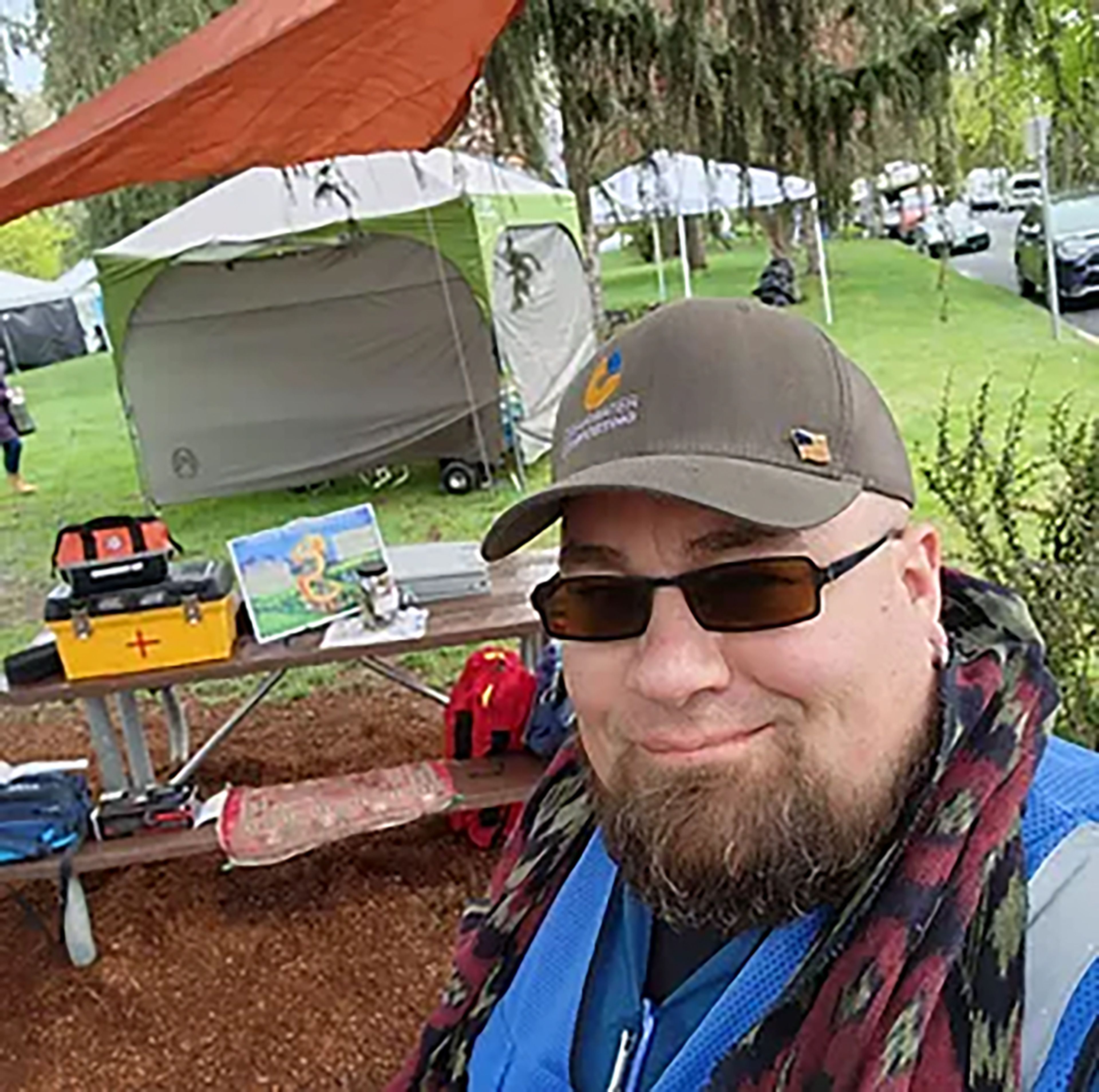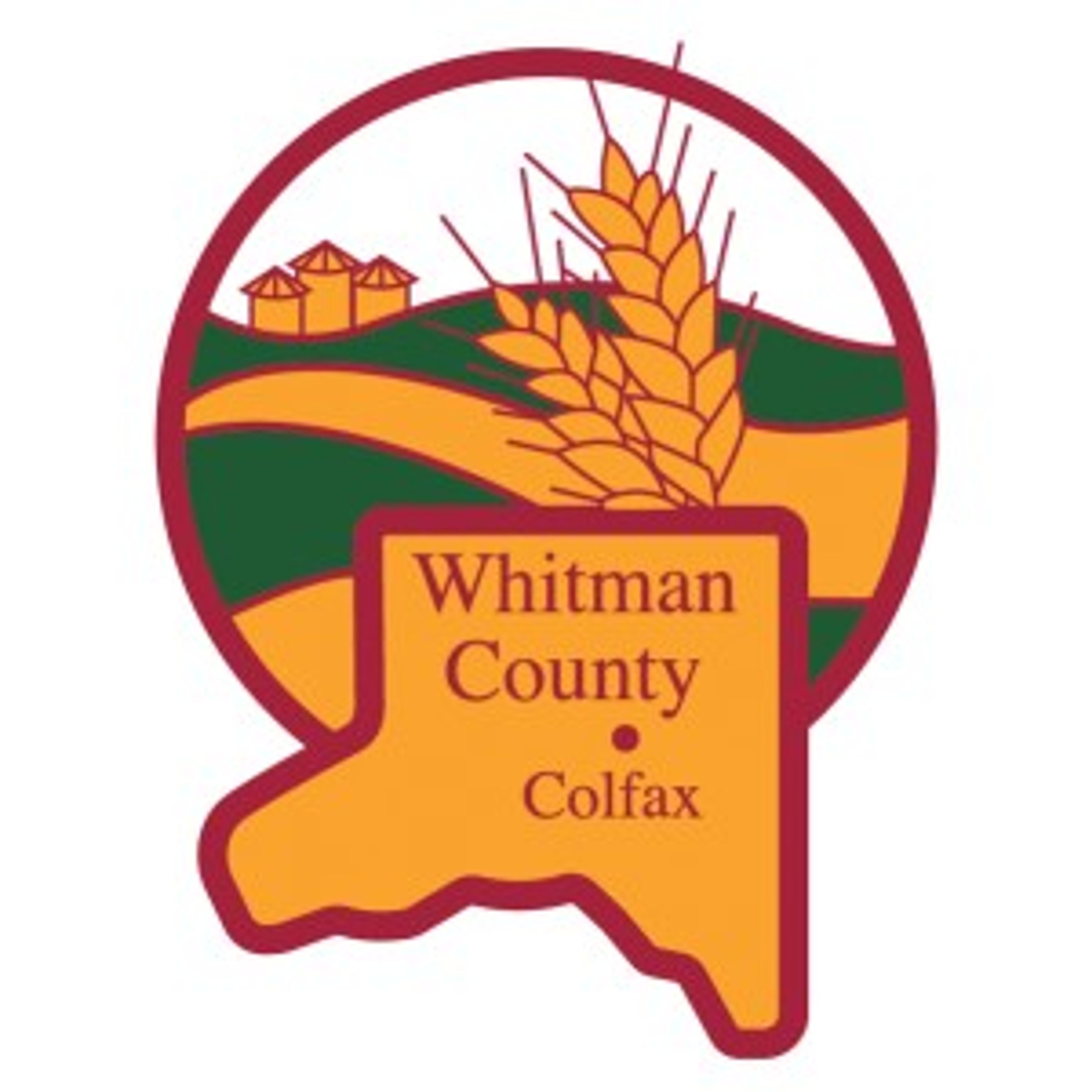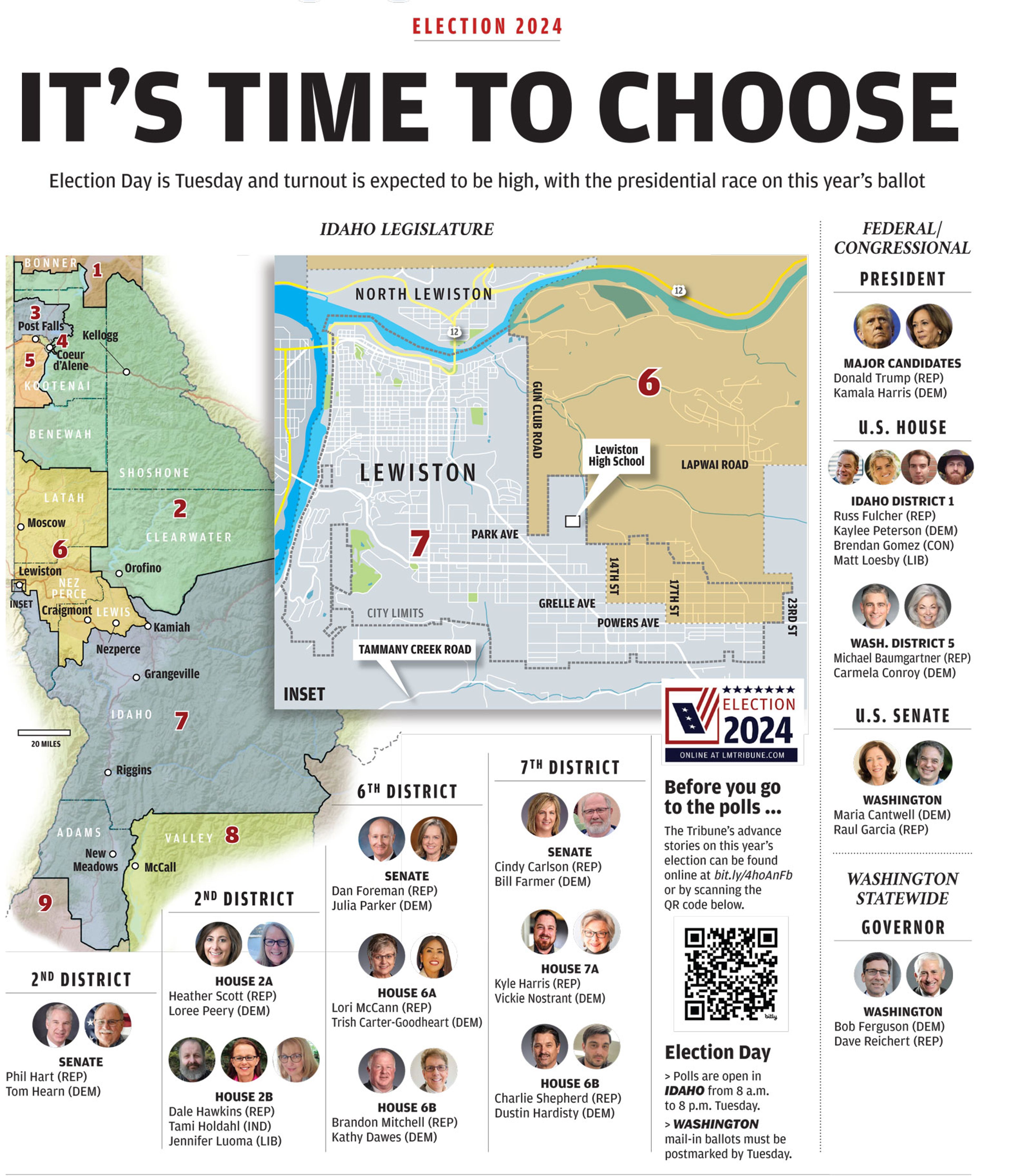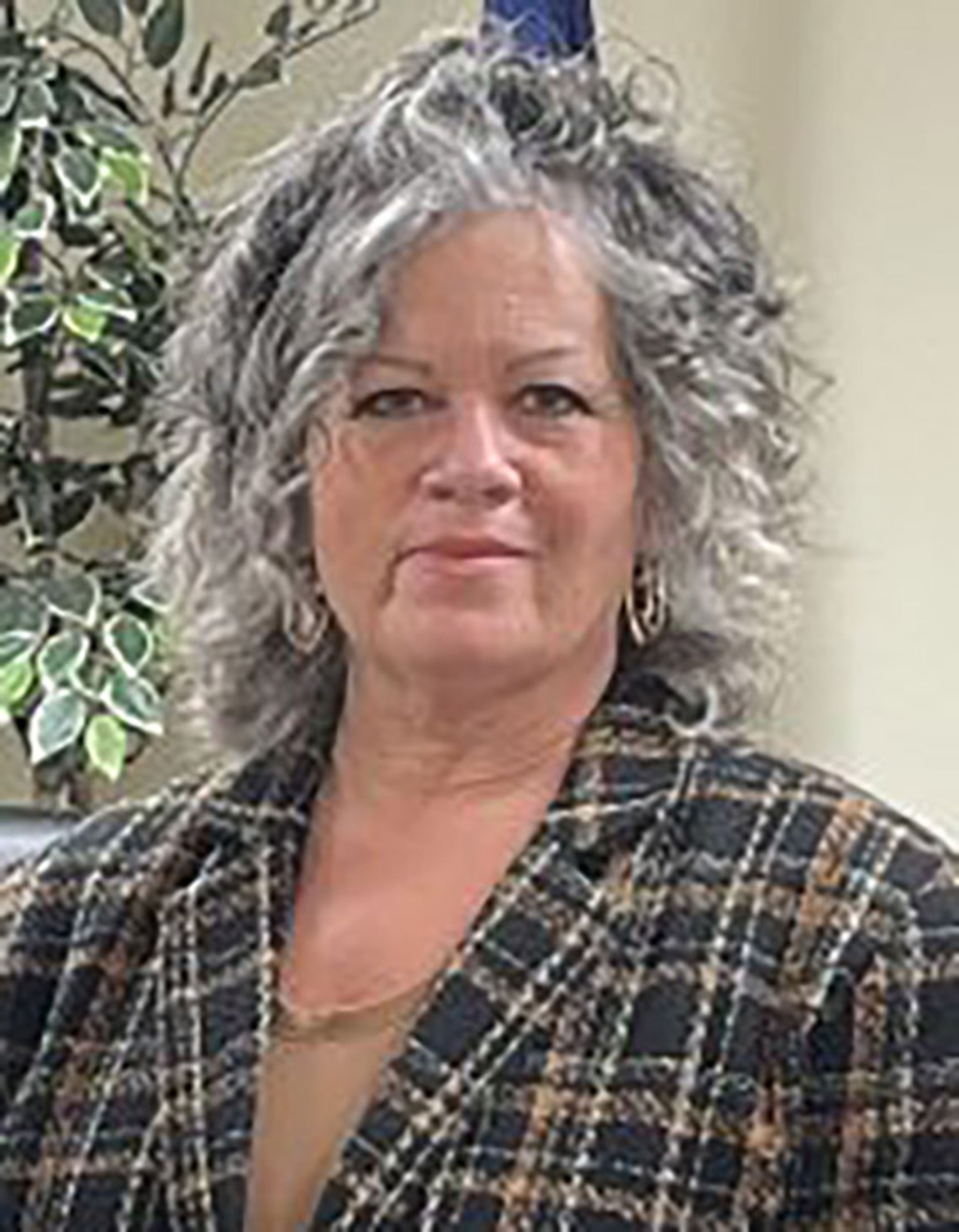'Like drifting on clouds'
Idaho teen thrives as sled racer
HAILEY, Idaho - The Larsen family's sled-dog racing odyssey began with a canoe trip to the Boundary Waters of Minnesota and two family pets.
Troy Larsen and his wife, Linda, spotted a skijoring kit in a shop on that trip. They bought it - and, when they got home, tried the sport in which dogs (usually two) pull a skier.
"The first few times, I thought I made the biggest mistake of my life," Troy said. "I about died."
Then came daughter Julia, who wanted her own skijoring dog. Then the family had so many dogs that a sled-dog team made more sense than skijoring. Then Julia wanted her own team.
And before long, the Larsens had collected as many as 19 dogs and two sled-dog teams - racing on weekends around the West.
"We didn't get into dogs to race," Troy said. "It just came along with it."
For the past decade, Troy and Julia - who recently turned 18 and is a senior at Wood River High - have bonded through raising, nurturing, feeding, doctoring and saying goodbye to a string of Alaskan huskies, the breed engineered to race 15 to 35 miles a day at top speeds approaching 20 mph.
This winter likely was their final season together. Julia, who raced as a pro in the eight-dog class this winter, will enroll at Boise State this summer. Troy will take over her sled-dog team, which was built over a span of three years to give Julia the best senior year possible.
Julia says riding a dog sled is "like drifting on clouds."
"Being out on the sled and having that incredible adrenaline rush, especially at races, it's so fun," she said. "But mainly I'm going to miss the interaction with my dad. Dog sledding has been my dad and I's sport since I was little. My mom and brother call themselves our managers."
The Larsens are a rarity in Idaho. The Stanley Sled Dog Rendezvous drew fewer than 10 teams last year.
"It's a pretty esoteric sport," said Rick Katucki, a recreational sled dog racer who lives in Eagle and helps organize the Stanley event. "It's also really exciting. ... It usually gets passed down through families. An adult gets the bug and starts doing it and brings kids up through the junior races."
Raising a musher
The Larsens settled in Hailey when Julia was 5. Their house opens onto expansive, flat terrain where they can grab the dogs from the kennel and go skijoring or dog sledding for miles without getting in a car. Julia's skijoring experience began in a sled, being towed behind her parents.
"I started standing up in the sled," she said.
Her parents let her try skijoring on downhill skis with one dog. She, of course, wanted her own dog after that. The family answered an ad from Logan, Utah, for sled dogs that needed a pet home or to move down to a less strenuous form of racing.
"We came home with three of them because we just fell in love with them," said Julia, who was 7 at the time.
The kennel owners predicted the Larsens would buy a dog sled next - and they were right.
"It got to the point that we wanted to exercise them more," Julia said. "Taking them out cross country skiing wasn't enough."
A year later, at 8 years old, Julia was racing. Her dad would run six dogs in the adult class and then give her two of them for the junior class. She didn't win - the other children used fresh dogs, she said - but she got a taste for the sport that would become a central part of her life.
"I'm super, super competitive," Julia said. "I want to be better and try to win. I'm all by myself, but I'm part of that dog team."
'The ninth dog'
Julia played basketball in middle school but decided not to pursue the sport in high school so she could devote her attention to dog sledding. She plays on the Wood River varsity girls golf team in the spring and is the student body vice president.
She began competing in the pro class of sled-dog races when she was 13. She and her dad ran separate six-dog teams. She begins conditioning the dogs in August, training them around 5 a.m. Without snow, the dogs pull an ATV that's in neutral.
Julia also must train herself with weightlifting and cardio programs. She must be strong enough to break up a dog fight or place an injured dog in the sled and fit enough to run up snowy hills.
"My goal, if I'm running eight dogs, is to be the ninth dog," she said. "If we're going uphill, I can get off the sled and run. That's how you win. You've got to run and help your dogs out. ... I'm off my sled running a lot, pedaling with one foot kicking snow, just to help further the sled and lighten the load for the dogs."
The musher also controls the speed of the dogs - a critical aspect to sled-dog racing. The Larsens estimate that half of the success of a sled-dog team is based on the performance of the musher.
"Some dogs can run up to 40 mph, but they can only do that for a very short distance," Troy said. "The musher is the pace-setter. They're the coach. They're the ones that essentially know where the fine line is between too much and not enough. But obviously when you win, it's all about the dogs. They're the ones pulling the sled."
Julia didn't win a race this season but, given the increased competition in the eight-dog, pro class, Troy says she did an "extremely commendable" job. She took second and third in a pair of races in Montana and finished fourth in the Eukanuba 8-Dog Classic in Wyoming.
"That was my dream race since I was little," she said. "... This year, my dad has just given me the dogs so I've been racing for kind of my final hurrah."
'Leaving my best friends'
Now that the season is over, Julia still takes the dogs out with the sled near the family home. A five-mile run might take 20 minutes. In races, Julia averages about 14 mph with top speeds near 20 mph.
After a run, she goes from dog to dog - pouring water, giving hugs and delivering food.
She does have a favorite - don't tell the others, she warned. Snoopy Moose, who died earlier this year, was given to Julia as a puppy by a friend when she was 8. She had asked Santa for a sled-dog puppy for Christmas.
"One of them will bark, and I'll know who it is," she said of the 13 dogs the family has now. "These guys are pets, but they're also my teammates. I have to know every little, quirky thing about them. That way, when we're out on the trail and something happens, I know how they'll respond and they know how I'll respond."
She figures she might race once next winter but doesn't feel like she will have earned the right to lead the team if she's not home to care for the dogs and participate in training runs.
"It's going to be hard," she said. "I'm leaving my best friends behind."







